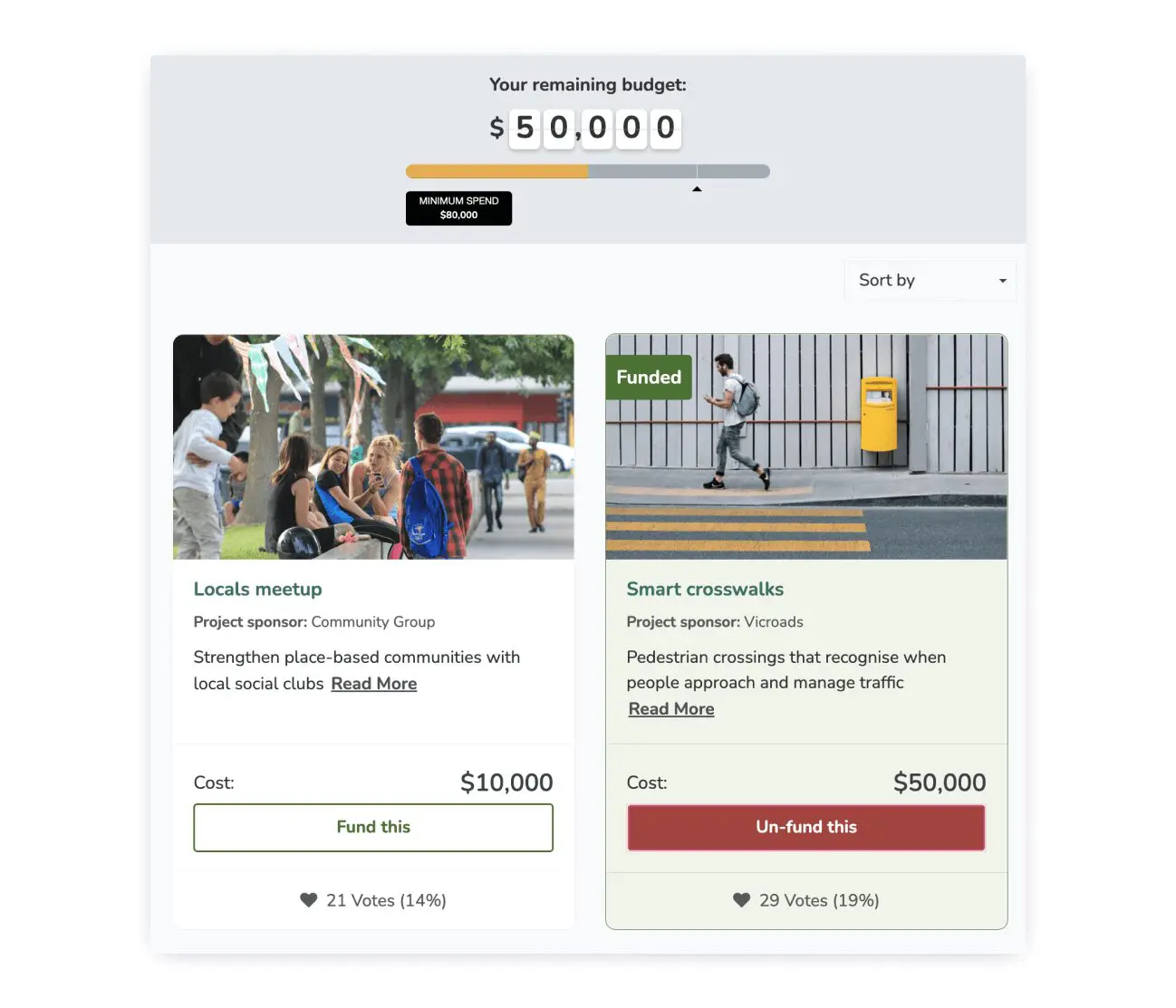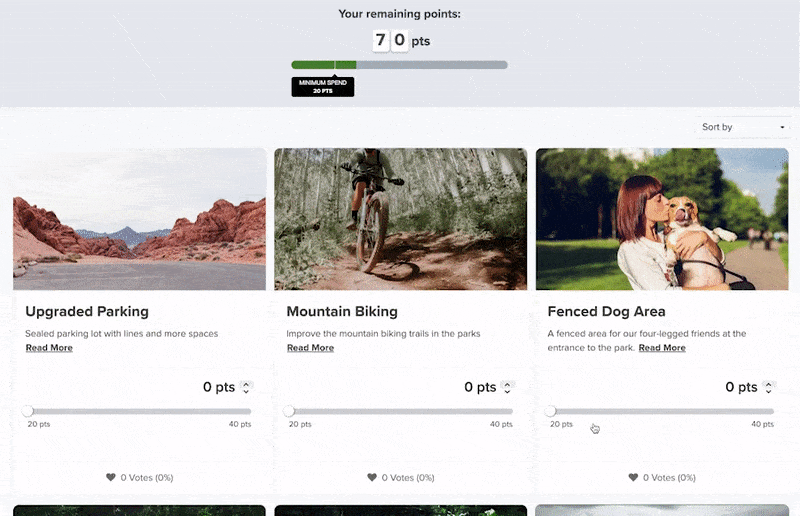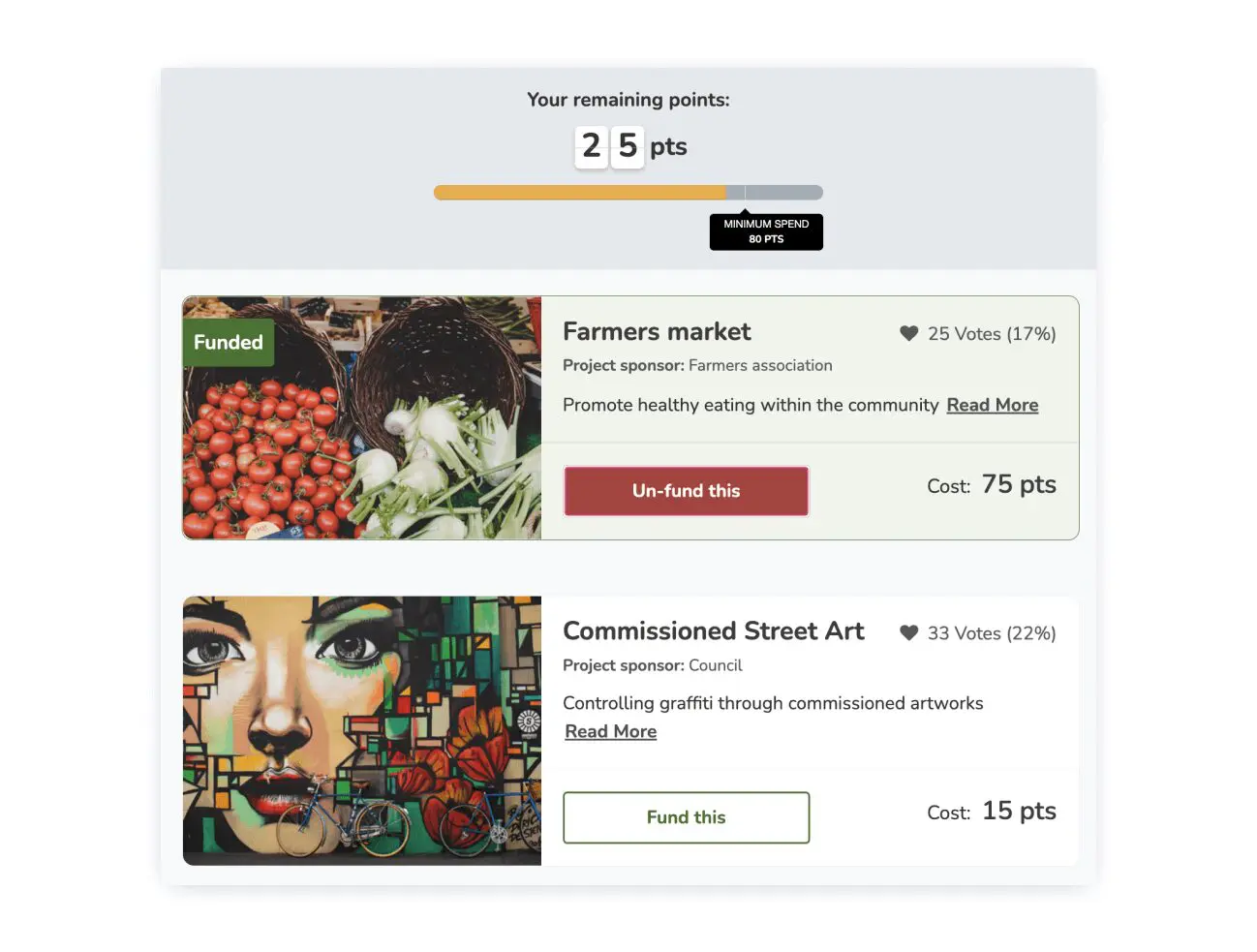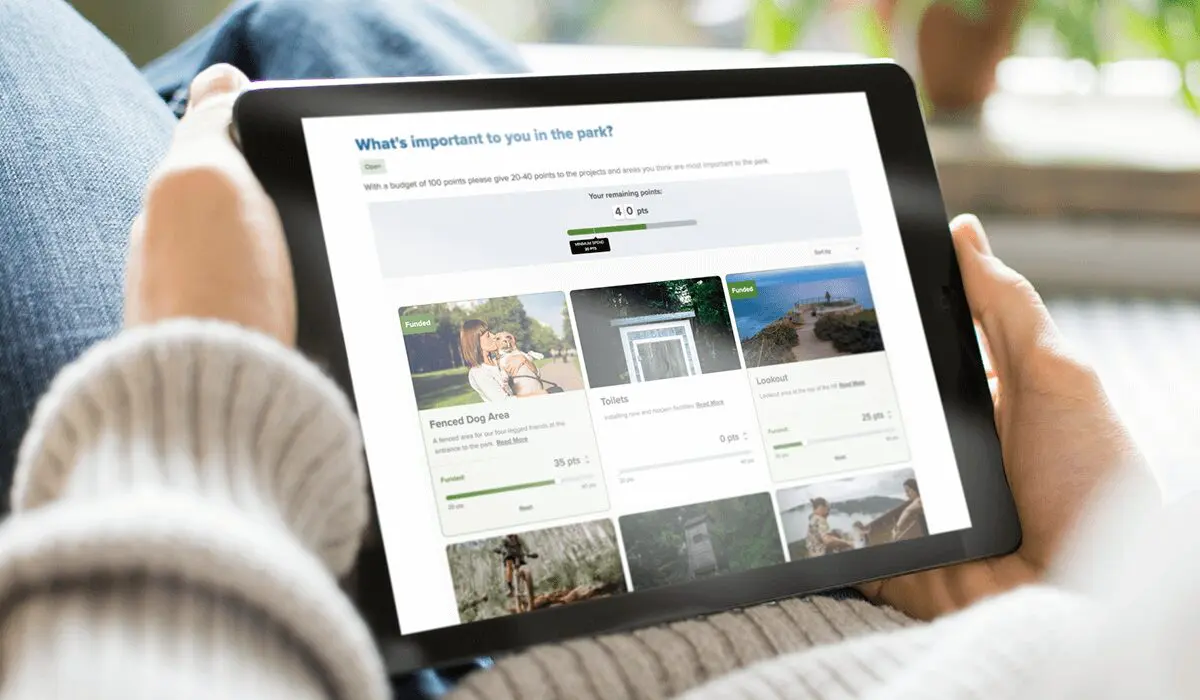Participatory budgeting is a democratic process that lets community members voice how they would like public money to be spent. It can be a powerful tool for building consensus because it empowers citizens to weigh up the inherent tradeoffs in any project. However, it’s important that the right technology and processes are in place to maximize the full value of the participatory budgeting process.
Participatory budgeting gives the community the opportunity to prioritize spending in a way that aligns with its values. Not only does it empower citizens, but it also gives decision-makers deep insight into community sentiment.
Citizens get to step into the shoes of decision-makers and weigh up a variety of options based on cost, value, and merit. Meanwhile, decision-makers receive quantitative insights into the community’s values and preferences.
How Participatory Budgeting Works
During a participatory budgeting engagement, participants are asked to spend a pool of dollars or points on a range of projects, programs, or initiatives. The public has to think about how they would allocate an available budget to address issues and achieve desired outcomes.
This gives citizens an opportunity to contribute their knowledge and expertise to decision-making, while also experiencing a level of accountability and community-led thinking that they don’t always have access to.
Participatory budgeting can be conducted offline or online. However, using online tools can make the process less resource-intensive by streamlining data capture and analysis. It also provides a broader opportunity for more community members to participate while making the process simple, interactive, and fun.

The Challenges of Participatory Budgeting
While participatory budgeting can increase transparency and trust in public spending, it’s important that decision-makers think carefully about the level of control they want to give the community over how funds are spent.
Decision-makers have to be honest about the level of influence the public’s input will have over the final budget, and then honor that depth of involvement. In some instances, decision-makers need to invest in building the capacity of communities to take on that level of responsibility before they can realize the best outcomes.
It’s also important that the budget allocation process reflects the community’s values while aligning with the public’s level of influence on the final outcomes. For example, if community members can only allocate fixed amounts of budget towards pre-selected initiatives, then the final results may not be wholly reflective of their preferences.
How to Capture the Advantages of Participatory Budgeting
There are a number of ways decision-makers can run the participatory budgeting process in order to capture the most valuable insights from the community while staying true to the level of involvement they are able to share.
So, let’s explore a few examples that showcase how you can set up a participatory budgeting project online.
Knapsack-Style Budgeting
In a knapsack-style budget, the community can select from options that all have an associated value. Participants can then choose the combination of options that they feel maximises the outcomes delivered from a set budget. Depending on the parameters of the budget process, limits can also be set on the number of options that can be selected.

Variable Budgeting
Social Pinpoint has also created a participatory budgeting sliding tool (known as our Variable Fund It) that allows the community to showcase its enthusiasm for various options. Rather than dealing with a fixed value for each available option, the community can choose exactly how much funding they would like to put towards an item.
This gives the community full control over budget allocation, meaning that participants can partially fund an option in order to channel investment into another item.

Using Points or Votes
It’s also possible to switch from dollars to points if a voting format is more appropriate. This will allow the community to allocate its votes according to a range of options provided, with each item considered to be equal.
Voting is incredibly useful if you would like community input on future priorities or options. As each option is equal, it’s easy to understand which option/s are more popular and therefore, where more information and further exploration should take place.

Use Randomization to Prevent Bias
Using an online participatory budgeting tool, it’s also possible to randomize the order of budget items presented to each participant in order to prevent bias as to how money is spent.
Simple randomization is the most effective method to reduce selection bias and will ensure that each option is given the opportunity to be showcased.
Building Trust in Decision-Making
Participatory budgeting gives the community a meaningful opportunity to shape its future. It’s essential to share the results after all submissions are received to showcase to the community that the process is fair and transparent. If citizens have the chance to explore the tradeoffs and see the outcomes of their input, they are more likely to trust the decision-making process and participate again in the future.












